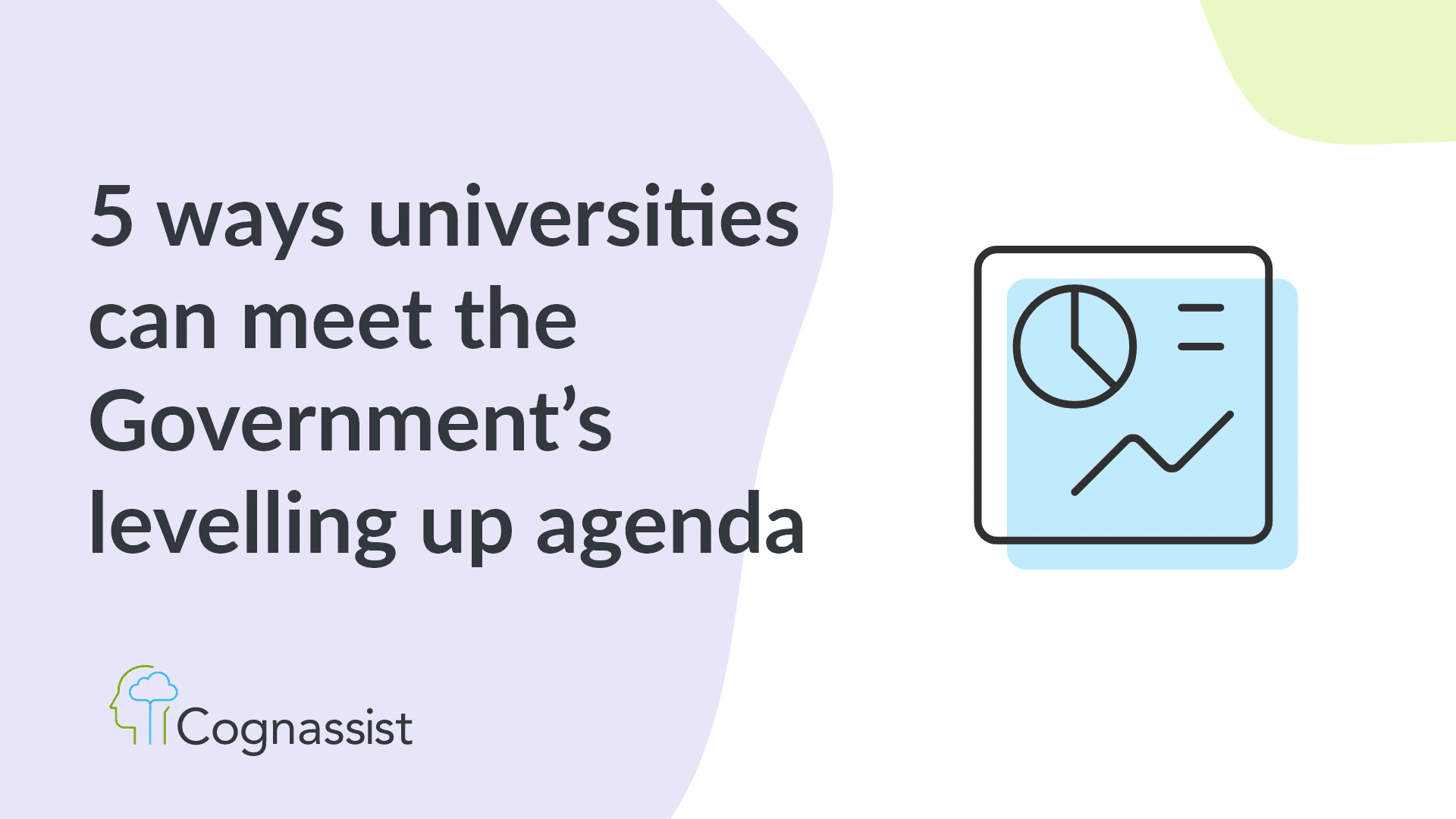
5 ways universities can meet the Government’s levelling up agenda
In today’s world, making sure everyone is supported through their education is more important than ever. With the impact of the pandemic and learning becoming distanced and remote, the gap has grown deeper in places, putting disadvantaged learners at an even higher risk of dropout and unemployment.
Last month, the Government unveiled a new agenda to demand more of universities and help them ensure every student has an equal chance of success and positive outcomes. It includes raising standards, offering the right courses for each individual person, going from quota to impact, from shiny marketing spend to prioritising learner support.
Here are five ways universities can meet the Government’s levelling up agenda.
1. Raising standards and aspirations
Getting more disadvantaged students into university doesn’t mean lowering standards or ‘dumbing down’ courses—quite the opposite. Raising standards in school, helping every pupil get better grades and providing the right support are all on the agenda.
And not only is it important to get more students from disadvantaged backgrounds into higher education, it’s vital to get them on the right courses for them, from financial services to guidance on saving for the future. We need to support their aspirations and help them reach their ambitious goals.
We know that with the right support, learners who might typically struggle in education can go on to achieve alongside their peers.
It’s not about handholding, it’s about empowering effective self-led learning.
2. Getting on is as important as getting in
Essentially, what we mean here is that tracking progress is just as important, if not more so, than simply getting learners enrolled.
When it comes to levelling the playing fields and creating opportunities for disadvantaged students, it’s not a numbers game. For too long, universities have focused on how many disadvantaged learners they get through the door, instead of what really matters: getting the student on a course that consistently meets their needs to deliver a positive outcome.
“A student’s outcome after university needs to be as important to providers as a student’s grades before university,” Higher and Further Education Minister, Michelle Donelan, declared.
There is a lot that goes on between enrolment and achievement, though! And staff absolutely need to be supported to ensure they can track progress and meet their learner’s needs with confidence.
Bringing in more students from disadvantaged backgrounds is a good thing, but the effect is nulled if we leave those students to contend on their own, leading to confusion, frustration and drop out. How do they feel? Are they enrolled on a course that matches their skills and goals? Perhaps they struggle with a learning difficulty that hasn’t been identified due to the expensive and difficult journey to diagnosis?
Supporting learners to find out what works for them and how they learn best is the biggest part of that learner’s journey, hands down. And the methods your team uses to achieve this will make a big impact on effectiveness and the wellbeing of everyone involved.
In short, start moving away from “how many” and start asking yourselves “how well”.
3. Early identification
Increasing access and participation in learning relies on identifying learners who require support on day one. Don’t rely on self-disclosure of needs. Don’t wait for a learner to show signs of difficulties. The key to learner success is early identification to allow for the quick implementation of reasonable adjustments and one-to-one support.
Understanding neurodiversity is an important part of providing inclusive education and can help organisations discover what works best for each learner. For that, technology is the key. Forget about the long, costly paper assessments; quick, reliable digital cognitive assessments are the way forward, especially when waitlists for diagnosis are at an all-time high.
4. Streamline access and participation plans
In the new agenda, universities are asked to streamline support processes without demanding too much of staff and solidify their access and participation plans.
The new targets for access and participation plans include:
- Reducing dropout rates.
- Improving graduate outcomes — making sure more students go on to highly paid, highly skilled jobs.
- Increasing the number of students in degree apprenticeships and higher technical qualifications.
Cutting the bureaucracy and complexity of 30-page access and participation plans can only help. With a goal of making them short and clear pieces, available and accessible to members of staff as well as students and parents.
Less time spent writing long, abstract documents, more time spent in action, supporting those who need it using more streamlined and effective tools to support this process.
5. Invest in removing barriers – because the Government is!
Spread across 13 projects, the government announced £8 million in funding to support Black, Asian and minority ethnic students to get into postgraduate research places. A number of barriers and gaps these students face at the undergraduate level still prevent their access to postgraduate studies. With this investment, Research England and the Office for Students (OfS) are working to facilitate, inspire and train more BAME scholars.
To drive equality, diversity and inclusion effectively, we all need to be conscious of bias in our processes. Using evidence-based tools that promote inclusivity and focus on supporting learners is key. And this requires us to identify barriers or difficulties learners may have regardless of their background, especially when institutional barriers may have previously affected their access to support.
It is up to everyone now —not just the Government, but every school, provider, college and university— to invest in making education a place that gives people equal opportunities, regardless of background, age or previous experiences in education.
The focus for universities can’t be on getting people through the door. We need to help students get on courses that are right for them, help them set ambitious goals they can achieve and deliver positive outcomes that sets every person up for a successful life.
This new plan is summed up well in the words of Michelle Donelan: “I want your access budgets not to be spent on marketing but on raising standards, providing the role models, the information, encouraging aspiration and highlighting the high-quality opportunities available.”
At Cognassist, we offer a digital cognitive assessment to identify learning needs and deliver personalised learning journeys to support every learner on their journey to success. From working with over 100 degree apprenticeship providers, our data shows an average identification rate of 19% for learning differences that may cause barriers to learning — that’s about 1 in 5 people. Using a short digital remote assessment means organisations can assess at scale, opening the door for support almost immediately for any learner.
For more information on how to support your degree apprentices, download our free handbook. We offer nine tips to drive inclusivity and support all learners to achieve their qualifications, including a few top tips for reducing dropout.

Cécile
Marketing Executive
Download our free handbook
What’s included?
- 9 tips to increase inclusivity in your degree apprenticeship provision
- The 3 things you need to focus on to support degree level apprentices
- How to support better time management
- How to address drop out

